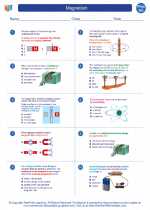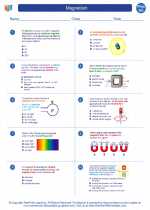Thunderstorms
Definition: Thunderstorms are a type of weather phenomenon characterized by the presence of lightning and thunder, as well as heavy rain, strong winds, and in some cases, hail or tornadoes.
Formation of Thunderstorms
Thunderstorms are formed when warm, moist air rises rapidly into the atmosphere, creating an updraft. As the air rises, it cools and condenses, forming cumulonimbus clouds. These clouds are associated with thunderstorms and are often characterized by their towering appearance.
Stages of Thunderstorm Development:
- Cumulus Stage: This is the initial stage when warm air begins to rise and cumulus clouds start to form. The updraft is strong, and the storm is building.
- Mature Stage: In this stage, the updraft continues, and the storm reaches its peak intensity. Lightning, thunder, heavy rain, and strong winds occur during this stage.
- Dissipating Stage: As the storm exhausts its supply of warm, moist air, the downdraft becomes dominant, and the storm weakens and eventually dissipates.
Thunderstorm Hazards
Thunderstorms can pose several hazards, including:
- Lightning: The electrical discharge that occurs during a thunderstorm can be dangerous and deadly.
- Heavy Rain: This can lead to flash flooding, especially in urban areas with poor drainage.
- Strong Winds: Gusts associated with thunderstorms can cause damage to structures and uproot trees.
- Hail: Large hailstones can cause damage to crops, vehicles, and buildings.
- Tornadoes: In some cases, severe thunderstorms can spawn tornadoes, which are capable of causing widespread destruction.
Thunderstorm Safety and Preparedness
It's important to be prepared and know what to do before, during, and after a thunderstorm. Here are some safety tips:
- Seek shelter indoors during a thunderstorm.
- Avoid using electrical appliances and plumbing fixtures during a thunderstorm to reduce the risk of being struck by lightning.
- Stay away from windows and doors, and avoid using corded phones or electronic devices connected to outlets.
- If caught outdoors, seek shelter in a sturdy building or a hard-topped vehicle. Avoid open fields, hilltops, and isolated trees.
- After the storm has passed, be cautious of hazards such as downed power lines and flooding.
Study Guide
To further understand thunderstorms, consider the following study topics:
- Atmospheric conditions that lead to thunderstorm formation, including the role of instability and moisture.
- The formation and characteristics of cumulonimbus clouds.
- The science of lightning and thunder, including how they are produced within a thunderstorm.
- The impact of thunderstorms on the environment, human activities, and infrastructure.
- The role of meteorological tools and technologies in predicting and monitoring thunderstorms.
By studying these topics, you can gain a comprehensive understanding of thunderstorms and their significance in the field of meteorology and environmental science.
.


